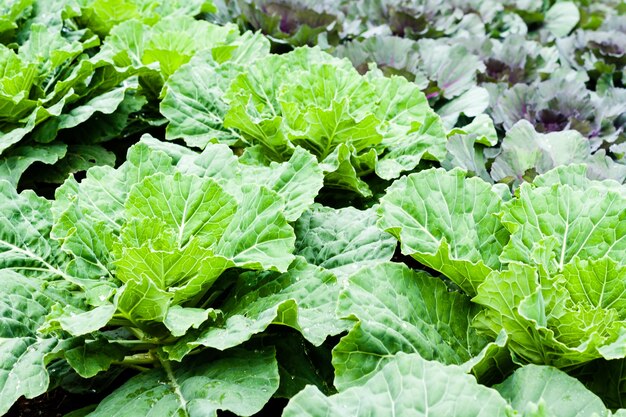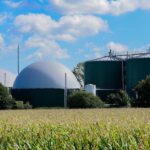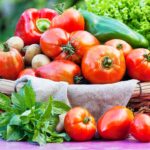Collard greens, a staple in South African diets, are a nutritious leafy vegetable rich in vitamins and minerals. For farmers looking to cultivate collard greens, understanding the process from seed to harvest is crucial for maximizing yields and ensuring healthy plants. This article provides a step-by-step guide on growing collard greens, covering land preparation, planting, care, pest and disease management, as well as harvest and storage practices.
1. Land Preparation
Before planting, it’s essential to prepare the soil for optimal growth conditions:
- Soil Type: Collard greens grow best in well-drained loamy or sandy loam soil with a pH between 6.0 and 6.8. Ensure the soil is rich in organic matter.
- Land Tillage: Use a plough or tiller to loosen the soil to a depth of at least 20-30 cm. Break up large clods and remove stones or debris. For small-scale farmers, hand tools like hoes can be used for tilling.
- Fertilizer Application: Before planting, incorporate well-rotted manure or compost into the soil to improve fertility. Alternatively, apply a balanced fertilizer (like 10-10-10) at a rate of 500 kg per hectare to boost soil nutrient levels.
2. Planting Collard Greens from Seed
- Seed Selection: Purchase high-quality collard green seeds from reputable suppliers to ensure good germination and disease resistance.
- Sowing: Seeds can be sown directly into the ground or started in a nursery. For direct seeding, plant seeds 1 cm deep and 50-60 cm apart in rows spaced 60-75 cm apart. If using nursery seedlings, transplant them when they are about 4-6 weeks old and 10-15 cm tall.
- Ideal Planting Time: Collard greens are a cool-weather crop, best planted in late summer or early autumn to avoid extreme heat. In South Africa, the planting season typically falls between March and June.
3. Watering Requirements
Collard greens require consistent moisture to thrive, especially in their early growth stages:
- Watering Frequency: Water the plants 2-3 times a week during the growing season, ensuring that the soil remains evenly moist but not waterlogged. In areas with high temperatures, more frequent watering may be needed.
- Irrigation Methods: Drip irrigation is ideal for conserving water and delivering moisture directly to the root zone. Alternatively, a sprinkler system can be used, but avoid overhead watering late in the day to prevent leaf diseases caused by excess moisture.
4. Fertilization
Collard greens are heavy feeders and require additional nutrients throughout their growth cycle:
- Nitrogen Fertilization: To encourage leaf growth, apply a nitrogen-rich fertilizer (such as ammonium nitrate or urea) at a rate of 100-150 kg per hectare, typically 4-6 weeks after transplanting. Repeat the application every 3-4 weeks for optimal growth.
- Side Dressing: If needed, you can side-dress the plants by applying fertilizer in a shallow trench alongside the rows, being careful not to damage the roots.
5. Weed Control
Weeds compete with collard greens for nutrients, water, and sunlight. Proper weed management is crucial, especially during the first few weeks of growth.
- Herbicide Use: Pre-emergence herbicides like metolachlor or alachlor can be used to prevent weed germination. Apply herbicides before sowing or transplanting, following label instructions.
- Manual Weeding: For smaller farms, manual weeding using a hoe or hand-pulling is an effective and eco-friendly option. Ensure regular weeding, especially in the first month of growth when the plants are most vulnerable.
6. Pest and Disease Management
Collard greens are susceptible to several pests and diseases that can impact yields if not managed correctly:
- Common Pests:
- Cabbage worms (caterpillars of moths and butterflies) are a common pest that feeds on the leaves. Regular monitoring is important to spot damage early.
- Aphids and whiteflies are sap-sucking insects that can weaken the plants.
- Cutworms may damage young seedlings at ground level.
- Disease Management:
- Downy mildew is a fungal disease that affects leaves, causing yellow spots and gray mold underneath. It’s more common in humid conditions.
- Black rot can also affect collard greens, particularly in wet conditions, leading to yellowing and wilting leaves.
- Pesticide Use: For pests like aphids and cabbage worms, apply organic insecticides like neem oil or chemical options such as pyrethroid-based pesticides. Use fungicides such as copper-based sprays for fungal diseases. Always follow the application rates and schedules indicated on the product label.
7. Harvesting Collard Greens
- Harvest Time: Collard greens are ready for harvest 60-85 days after sowing, depending on the variety. For continuous harvest, pick the outer leaves when they are about 20-25 cm long. Leave the inner leaves to continue growing for a later harvest.
- Tools Needed: Use a sharp knife or garden shears to cut the leaves cleanly without damaging the plant. If you are harvesting the entire plant, cut the stem just above the ground level.
- Best Time to Harvest: It’s best to harvest early in the morning when the leaves are fresh and full of moisture.
8. Post-Harvest Handling and Storage
Proper post-harvest handling is crucial to maintain the freshness and quality of collard greens.
- Washing and Cooling: Immediately after harvesting, wash the leaves to remove dirt and any pests. Cool them quickly by placing them in cold water or storing them in a cool, shaded area.
- Storage: Collard greens can be stored in a refrigerated environment at 0°C to 4°C with high humidity (90-95%) to retain freshness for up to 2 weeks. For longer storage, collard greens can be blanched and frozen.
9. Machinery Required
For larger-scale farmers, some machinery can help streamline the planting, care, and harvesting processes:
- Tractor with attachments such as a plough, harrow, or bed shaper can aid in land preparation.
- Drip irrigation systems or overhead sprinklers can automate watering.
- For weeding, mechanical weeders or herbicide sprayers can reduce labor.
- Harvesting knives or mechanical harvesters for larger farms can speed up the collection process.
Collard greens are a hardy crop well-suited to South African conditions, but success in growing them depends on proper land preparation, water and nutrient management, pest and disease control, and careful post-harvest handling. By following these guidelines, farmers can ensure high yields and excellent crop quality, contributing to their own food security and income generation.
Join 'Farmers Mag' WhatsApp Channel
Get the latest Farming news and tips delivered straight to your WhatsApp
CLICK HERE TO JOIN






